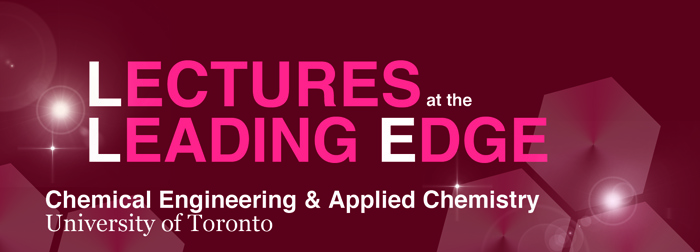
KEITH JOHNSTON
University of Texas
HELPING NANOMATERIALS REACH THEIR COLLODIAL POTENTIAL
Fundamental colloid and interface science plays a key role in the design of novel functional nanomaterials in a broad range of applications in energy and nanomedicine. Whereas nanoparticles are commonly stabilized in biological fluids, interest has grown recently in media with much higher ionic strengths relevant to environmental science and subsurface oil and gas reservoirs. To provide electrosteric stabilization and to enable transport of nanoparticles in porous media at these severe conditions, both low molecular weight ligands and polyelectrolytes have been identified and grafted by various techniques to the particle surfaces. Applications include superparamagnetic iron oxide nanoparticles for electromagnetic imaging and nanocapsules for delivery. Stabilization of foams with ultra-low water contents has been achieved, despite large capillary pressures, by forming highly viscous aqueous phase composed of nanostructured entangled wormlike micelles. A major challenge in nanoparticle engineering is to pack sufficient functionality into nanoparticles smaller than ~100 nm. A general paradigm is presented for assembly of reversible nanoparticle clusters from primary nanoparticles, whereby the nanocluster size and particle spacing may be controlled by tuning the colloidal interaction potential. This approach is used to assemble NIR active Au nanoclusters of controlled size for biomedical imaging, which reversible dissociate back to primary particles upon biodegradation of the stabilizing polymer. Finally, the dissociation of small clusters (reversible aggregates) of monoclonal antibodies is manipulated by adding cosolutes to form low viscosity solutions for subcutaneous delivery.
Date/Time |
Location 200 College Street Wallberg Building Room 116 |
 KEITH JOHNSTON received his PhD in 1981 in chemical engineering at the University of Illinois and joined the University of Texas after a year at Sandia National Laboratories. His awards include the Allan P. Colburn Award and Award for Excellence in Industrial Gases Technology from AIChE, and he was named by AICHE in a list of "One Hundred Chemical Engineers of the Modern Era." He is a member of the US National Academy of Engineering and is a Fellow of the Am. Inst. of Medical and Biological Engineers. He directed UTs activities in the NSF Science and Technology Center: Environmentally Responsible Solvents and Processes through 2009. He conducts fundamental research combining materials chemistry, colloid and interface science and polymer science to guide the development of applications in a wide range of fields including drug delivery, biomedical imaging/therapy, microelectronics, energy storage and subsurface energy production. He has discovered/co-discovered various nanomaterials including water/CO2 microemulsions, silicon nanowires, and therapeutic protein nanoclusters. He has made significant contributions in a new field of nanotechnology for subsurface green energy production which includes CO2 sequestration, improved oil recovery, magnetic nanomaterials for electromagnetic imaging of reservoirs, and greener fracturing with low water utilization.
KEITH JOHNSTON received his PhD in 1981 in chemical engineering at the University of Illinois and joined the University of Texas after a year at Sandia National Laboratories. His awards include the Allan P. Colburn Award and Award for Excellence in Industrial Gases Technology from AIChE, and he was named by AICHE in a list of "One Hundred Chemical Engineers of the Modern Era." He is a member of the US National Academy of Engineering and is a Fellow of the Am. Inst. of Medical and Biological Engineers. He directed UTs activities in the NSF Science and Technology Center: Environmentally Responsible Solvents and Processes through 2009. He conducts fundamental research combining materials chemistry, colloid and interface science and polymer science to guide the development of applications in a wide range of fields including drug delivery, biomedical imaging/therapy, microelectronics, energy storage and subsurface energy production. He has discovered/co-discovered various nanomaterials including water/CO2 microemulsions, silicon nanowires, and therapeutic protein nanoclusters. He has made significant contributions in a new field of nanotechnology for subsurface green energy production which includes CO2 sequestration, improved oil recovery, magnetic nanomaterials for electromagnetic imaging of reservoirs, and greener fracturing with low water utilization.
| For more info: uoft.me/lle2016-17 |
Websites of Interest
- University of Toronto
- Faculty of Applied Science & Engineering
- Department of Chemical Engineering & Applied Chemistry
